We are facing a similar issue at work, and I stumbled upon this question with your (excellent) demo page.
As you mentioned, the offset is always ~50% of the height of the page, which happens regardless of where your initial offset is.
In the past, when I observed a similar "jumping" with earlier iOS versions (albeit, much less dramatic jumping), I have usually worked around this by applying position: fixed (or relative) to the body (this allows overflow: hidden to properly work).
However, this has the unattended consequence of jumping the user back to the top of the page, if they've scrolled down.
So, if you're open to addressing this issue with some JavaScript, here's a fix/hack I've thrown together:
// Tapping into swal events
onOpen: function () {
var offset = document.body.scrollTop;
document.body.style.top = (offset * -1) + 'px';
document.body.classList.add('modal--opened');
},
onClose: function () {
var offset = parseInt(document.body.style.top, 10);
document.body.classList.remove('modal--opened');
document.body.scrollTop = (offset * -1);
}
And what the CSS looks like:
.modal--opened {
position: fixed;
left: 0;
right: 0;
}
Here's a fork of your demo page, to illustrate: https://jpattishall.github.io/sweetalert2/ios-bug.html
And for those who are looking for a more general fix, you could do something like the following when opening/closing a modal:
function toggleModal() {
var offset;
if (document.body.classList.contains('modal--opened')) {
offset = parseInt(document.body.style.top, 10);
document.body.classList.remove('modal--opened');
document.body.scrollTop = (offset * -1);
} else {
offset = document.body.scrollTop;
document.body.style.top = (offset * -1) + 'px';
document.body.classList.add('modal--opened');
}
}
Edit: One thing to note is that we didn't apply the fix to all devices/platforms blindly, just iOS Safari. I noticed in your other question that you weren't a fan of overflow: hidden due to the shifting of the page when the scrollbar appears/disappears (which I totally agree with). I would suggest just applying the JS to iOS devices only.
